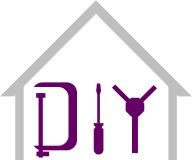While the popular Worx Pegasus Work Table is a great option for home DIYers, the most common complaint is clamping wood to the top. It just doesn’t work well. In this video I show you how to upgrade your Worx Pegasus by building a new table top that allows for proper clamping and makes this work table even more versatile.
The Problem
The biggest problem I’ve had and you’re going to see this in a lot of the online reviews as well, is clamping anything to the table top. You’ll notice here it’s not actually flat all the way across.

Underneath isn’t flat either. It’s got this honeycomb that’s part of what makes it light. When you attach a clamp it won’t hold solid or it even breaks the plastic underneath.

The Solution
I have upgraded my Pegasus with a new work top I created from one 2×6 and couple of scrap 1x2s underneath to hold it in place.

This gives me a solid surface to be able to clamp any sheet goods or two by goods onto for cutting or sanding. There are two sides that come off easily and can be stored separately from the work top. Let me show you how I built these.
Dimensions
My top overhangs the original top by about 3 inches in each direction. I did that because I wanted to keep the size of this compact. The whole point of using a Pegasus is that you want something that’s easy and compact. You could have it overhang longer in each direction if you want to. This keeps the cost down by using just a single 16 foot 2 by 6. If you want to adjust the design, adapt my instructions as appropriate.
Cutting & Assembly
Start by cutting six 30-inch pieces from your two by six. Try to find the straightest board at the lumber store. Line them up so they fit well together.

I am using pocket holes to join the boards so I marked lines where the pocket holes are going to go. I decided six pocket holes would work and I put them at 4 inches, 8 1/2 inches and 12 1/2 inches from each edge. I drew lines with my combination square on the 1st and the 2nd boards so I know where the pocket holes have to be drilled in each of these boards.

I then also measured a line 2 1/2 inches from each of the sides and 2 3/4 inches in from the outside, this is where the one by twos are going to go to hold it against the original top.
Drill the pocket holes in the two by sixes.

Clamp the boards together and have a clamp on each end holding them flat to each other. I used the 2 1/2 inch Kreg screws to screw them together, starting at the centre and then working my way to the outside.

For the brackets underneath to hold it snug to the original table top, I cut three 10 inch pieces of 1×2 finger joint pine. I put pocket holes in and screwed them to the underside of the new tabletop using one inch pocket hole screws.

Finishing
I sanded all the sides to get everything nice and smooth.

I prefer 3/4 inch bench dog holes in my work tops so I added those. You can use the bench dogs that come with the Worx Pegasus in these holes.

Usage
I designed it with a gap in the middle deliberately so I can cut sheet goods in the gap and have support on each side. If I do want to fill it in, I can just drop a 30 inch 2×4 in the gap.

The two sides easily come off for storage and slide on when you want to use them.

Video
The full build video is below.
Links to tools & products related to this video (affiliate links):
Worx Pegasus Work Table: https://amzn.to/3Fl7Cr7
Kreg 320: https://amzn.to/3R8XbO8
Kreg 2.5” screws: https://amzn.to/3T5oWsj
Kreg 1” screws: https://amzn.to/3MRBBuW
Auger bits: https://amzn.to/3rjIwVx
Spade bits: https://amzn.to/3G6Gcpe
Bessey EHK 6” clamp: https://amzn.to/3NDc9cb
Bessey EHK 12” clamp: https://amzn.to/3rfxwc5
